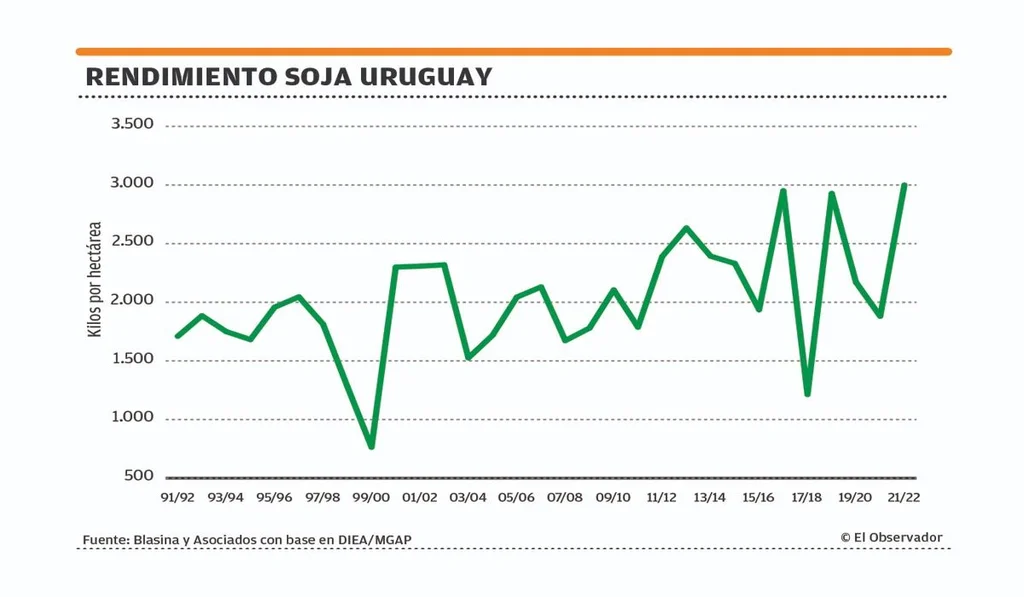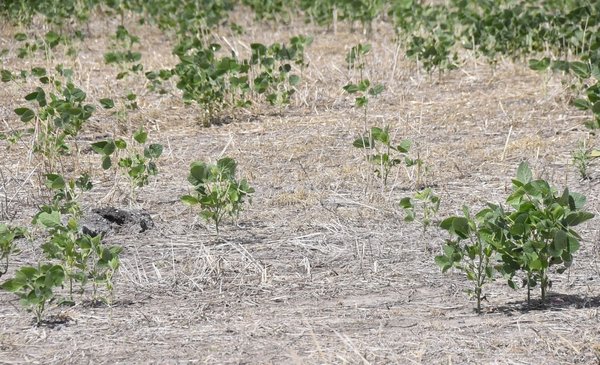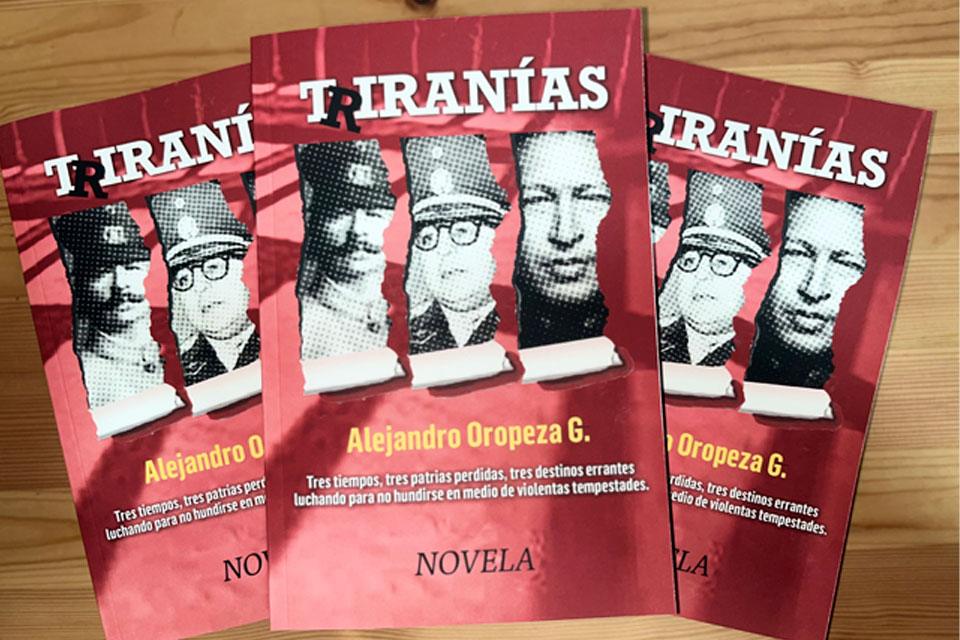With fear, but also with hope, because anything can happen. This is how they are these days farmers who have soybeans in their fieldswhere The drought has caused a wide variety of damage.with exceptional cases in which there are no difficulties.
A survey carried out by The Observer allowed to verify that there is everything: soybeans with irreversible damage, others badly affected but alive and even areas where it rained again and the damage can be hidden, at least in part.
At this point, about two months before the combines, tractors, dump trucks and trucks enter the fieldsit is risky to affirm both what generates fear and what gives hope: that there will be losses or that there will be some gain.
Extreme cases exist, but they are the least: producers who abandoned the crop or in the best of cases used the little that was born as animal feed and others that have irrigated soybeans and that will yield all the thousands of kilos that the type of soil, plant genetics and agronomic management allow.
Uncertainty is what predominates in the high percentage of productive systems where soybeans are the protagonist.
The impact of the drought on this agricultural activity not only keeps producers, their staff and their families awake at night, but also many people linked directly or indirectly to the soybean complex and especially to the government: This is the crop that during 2022 generated the income of 15% of the total obtained from the export of goods, US$ 1,992 million of the US$ 13,356 million. A record within another record. Only beef (with US$ 2,557 million) was above soybeans.
Soy, one of the engines of the Uruguayan economy.
“Serious, but alive”
Edgardo Rostán is a producer in the Ombúes de Lavalle area and provides machinery services in several nearby towns. According to what he saw in one of the last visits, the prime soybeans are losing yield potential, because they have reached the reproductive stage, they suffer from a lack of water and many are aborting flowers. In the case of second-rate soybeans, they have better potential since they were planted a little later than in other years to get rid of January with the small plant and only if it rains well in the next six weeks maybe they will have lost only about 500 kilos per hectare.
In short, said Rostán, “we are alive, serious, but alive.”
Something good, he mentioned, is that The harvest normally starts in mid-April, therefore there is a good part of the game to play and there is hope that the rains will return to normal.
“We need an end of February and a March with rain, heat and humidity”, he synthesized. If that happens, considering the response capacity of soybeans, there will be an equal loss in kilos, but many producers will at least be able to tie the scores and start thinking about revenge. And some even have a profit margin that is still in check.
The data
In the 2021/2022 campaign, soybeans were planted on 1,171,344 hectares, with a production of 2,776,194 tons and an average yield of 2,799 kilos per hectare.
Another reality is that, unlike what happened in other campaigns, Little of the soybeans to be harvested have been sold “in the future”, based on the fact that the producer has doubts about how much he will be able to collect and you don’t want to commit a grain that you don’t know if you will have. Furthermore, it is estimated that the price may improve given the reality of supply and demand in the international market.
It is of high value to sell when it is most convenient, especially if there is little to sell.
At the close of this note, soybeans had a reference value of US$547 per ton. A quick estimate states that about 2,200 kilos per hectare may be needed to cover production costs. It all depends on each productive system, its cost structure and how it sells, especially whether or not it has to pay rent for the field.
Covering the cost and perhaps earning something will depend on how the weather, the market and the accounts of each company behave.because the variety of assumed costs and prices to be obtained is wide.

Abrupt changes in the last average yields at the country level.
The rain dependent
Roberto Verdera, president of the Oilseed Technology Board (MTO), agreed that it is not easy to generalize about how the crops are doing, since the recent rainy episodes have been very uneven.
Until the end of January, he mentioned, “the photo was worse than last year’s,” he said, recalling that in 2022 there was also a drought, but the rains returned from mid-January.
“In a field suddenly it rained 15 or 20 mm and a few kilometers nothing or something else”mentioned who moves mainly in Mercedes and surroundings, since he works as general manager of the Calmer cooperative.
Therefore, there are cases of producers who already know they will have losses and others in which they were more favored by the rains and could cover costs and even reach a margin.
“The crops are petizones,” he said. Water was lacking for a long time, in a large part of the vegetative development and it happened everywhere until very recently. If it rains well from now on, the situation will settle down quite well in many farms, but if it does not rain well, the complication will worsen when the grain filling stage arrives. “There is still a lot of ground to cover,” he remarked.
Verdera said that “We are all very rain dependent because in the spring it did not rain at all. The crops were sown with the humidity that was available and were in great need of rain from the beginning”.
“Due to the type of soil we have, without much water retention capacity, in summer we are always dependent on rain, but this particular summer everything was complicated because we came from a very dry spring, where we planted with the humidity that was available for the emergency , but without any water below, therefore we knew that all the development of the crop was going to be rain-dependent,” he explained.
Finally, he pointed out that first class soybeans are already in bloom and second class soybeans are reaching that stage of the cycle, therefore one of the most critical stages is approaching.

John Samuelle
The export of soybeans generated revenues of almost US$2 billion in 2022, a record.
Accumulated losses: US$ 490 million
The Minister of Livestock, Agriculture and Fisheries (MGAP), Fernando Mattos, delivered in Parliament an analysis by the Office of Agricultural Programming and Policy (Opypa) that indicates a global loss of US$ 1,715 million due to the impacts of the drought in the agricultural sector.
Of the total, US$ 490 million correspond to summer rainfed crops, corn and soybeans.
The existence of crops with greater deterioration in the center-south of the country and on the north coast was cited, there is no water in the soil and the high temperatures cause the death of the plants.
In soybean, lost area was reported, mainly second grade. The prime soybean area is beginning to flower, with short internodes and little vegetative growth.
On average –at the beginning of February– it was estimated that the loss due to lower productivity would be at least 600 kilos compared to the country’s historical average of 2,300kg/ha.
A volume of at least 1.08 million unharvested tons of summer crops was estimated.















